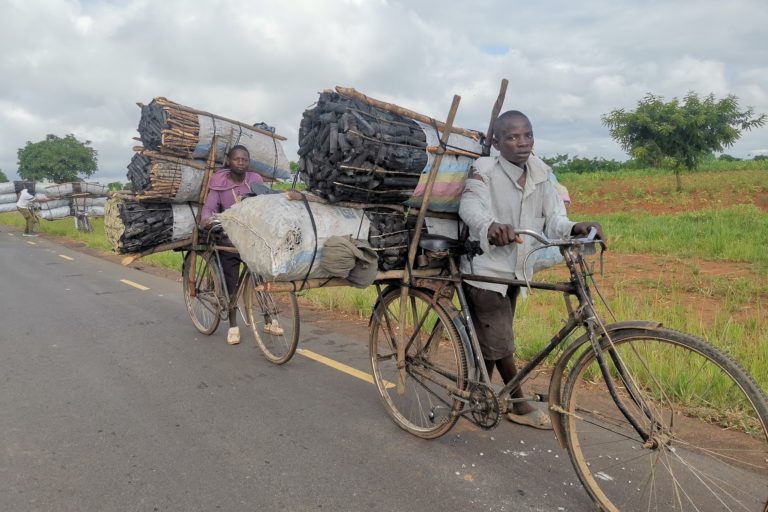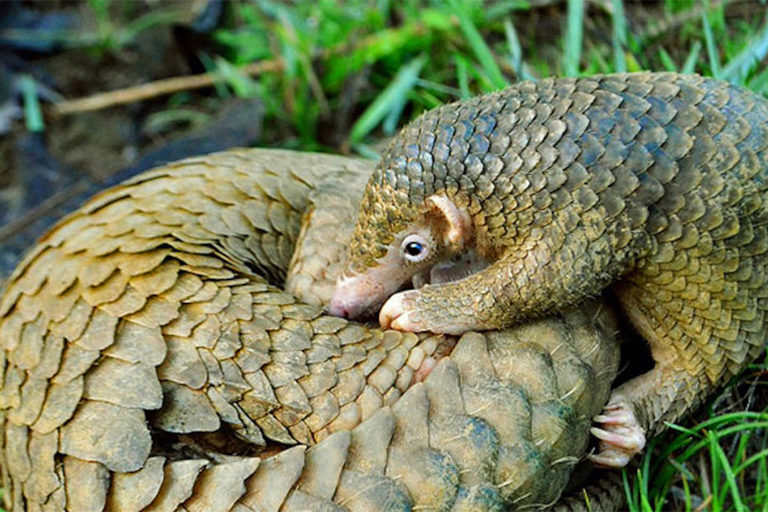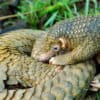As winter closes in, Ukraine is facing demoralizing news. Western support for the war is faltering, Ukrainian troops in the east are being pushed onto the back foot amid a…
Ports are considered lifelines of our economy, accounting for 75% of world trade (over 90% by tonnage), but generally not thought of as incubators to solve the climate crisis or…
A nickel mining concession that overlaps a protected area threatens the unique biodiversity of Sibuyan, a remote island at the center of the Philippine archipelago renowned for its natural beauty…
The ocean's thermohaline circulation, a system of various ocean currents and water-mass conveyors, is crucial for distributing heat, salinity, minerals, dissolved gases, and nutrients around the globe, sustaining a habitable…
Margaret Kinnaird has worked in conservation for decades, from North America to Africa. But it was only when she started working in Indonesia that she heard the acronym NATO, or…
Nearly twice the size of Africa, the North Pacific seems to be endless. But somewhere in that vast ocean, 30 eastern North Pacific right whales (Eubalaena japonica) live their lives,…
President Macron announced on 7 November 2022 at the CoP 27 in Sharm el-Sheikh, Egypt, an initiative to protect the planet's "vital carbon and biodiversity reserves", such as old-growth forests,…
In the years leading-up to the outbreak of genocide in Darfur, in 2003, median rainfall plummeted by a third. Already precarious pasture and grazing corridors shrank faster than communal land…
Local people and communities should be given greater control over the international trade in wildlife in order to make the multi-billion-dollar industry more sustainable, according to a group of scientists…
Asian companies made their entry in force in the 1990s, in Cameroon, Gabon and Equatorial Guinea. In Southeast Asia, companies intensively and unsustainably logged the dipterocarp forests, the tall, straight-trunked…
Daniel Kabichi’s telephone has been ringing a lot lately. As head of law enforcement operations within Malawi’s Department of Forestry, he represents the country’s latest strategy to fight deforestation and…
Finding endangered plants and animals for sale online remains easy. “Rampant” according to Mark Hofberg of the International Federation for Animal Welfare (IFAW). The strong word is significant since it comes from an…
Once the epicenter of the global trade in gold, illegal mining is once again surging across the Amazon. Its extraction and trade is not only fueling corruption, money laundering and…
I saw my first wild gorillas in Rwanda in 2002 and I was immediately drawn in by their power, their beauty, and the awareness that these amazing creatures were, despite…
It's as if a professional cleaner has been let loose in the rainforest. The whistles of birds and croaks of frogs have been vacuumed up, the messy understory cleared away.…
At a glance, Japan’s seafood sector is a financial success story. Indeed, between 2010 and 2019, the 70 publicly-listed companies exposed to the sector on the Tokyo Stock Exchange enjoyed…
In May 2017, the NGO Mighty Earth revealed the destruction of government forest reserves in Côte d’Ivoire by cocoa cultivation: out of 234, only six were still relatively intact. Deforestation…
A wave of planned “mega” infrastructure projects across the tropics of Latin America threatens the region’s forests and the biodiversity and carbon they contain, a group of scientists warned Aug.…
It was late afternoon deep in the dry season in Fatikh, a village in the Sahel region of Senegal. Out on his farm, El Hadj Ndiaye, a distinguished gentleman in…
Air pollution has significantly decreased over China amid the economic slowdown caused by the COVID-19 outbreak, signaling unanticipated implications for human health. “Given the huge amount of evidence that breathing…
For two decades or more, alarms have been sounding for the Mekong Delta. It's being hammered by climate change, by a proliferation of upstream dams, by unsustainable and inappropriate farming…
Farmer-managed natural regeneration (FMNR) of trees made headlines several years ago when 5 million hectares of Niger were found to have re-greened via the practice. FMNR is the encouragement of regeneration…
Cameras add monitoring power Field data collection is challenging in the best of conditions, and in an environment as harsh as Antarctica, large-scale, long-term field monitoring studies are rare. To…
It’s June, and migratory songbirds in the northern hemisphere are at their summer breeding grounds, having traveled thousands of miles from their warm-weather overwintering areas. Birds migrate as far north…
People love camera traps. Placed in the middle of a forest or savanna, their motion sensors trigger a photo when an animal or person passes by. They allow us to…
Satellite imagery has transformed how we assess changes in forest cover. The standard optical sensors carried by Earth-orbiting satellites capture the energy from sunlight reflected off objects on the Earth’s…
Researchers have identified a genetic analysis technique that pinpoints the harvest location of trees—a breakthrough that could help officials detect illegally traded timber. The multi-national research team tested the potential…
The United States, a major ivory market The sale of ivory across international boundaries has been banned since 1990, when the African elephant was listed among species prohibited for commercial…
Technology is changing how we investigate and protect planet Earth. The increased portability and reduced cost of data collection and synthesis tools, for instance — from visual and acoustic sensors…
Do you know where your endangered species are? A new online tool offers access to and analyses of a wealth of documents and data related to the United States Endangered…


































































